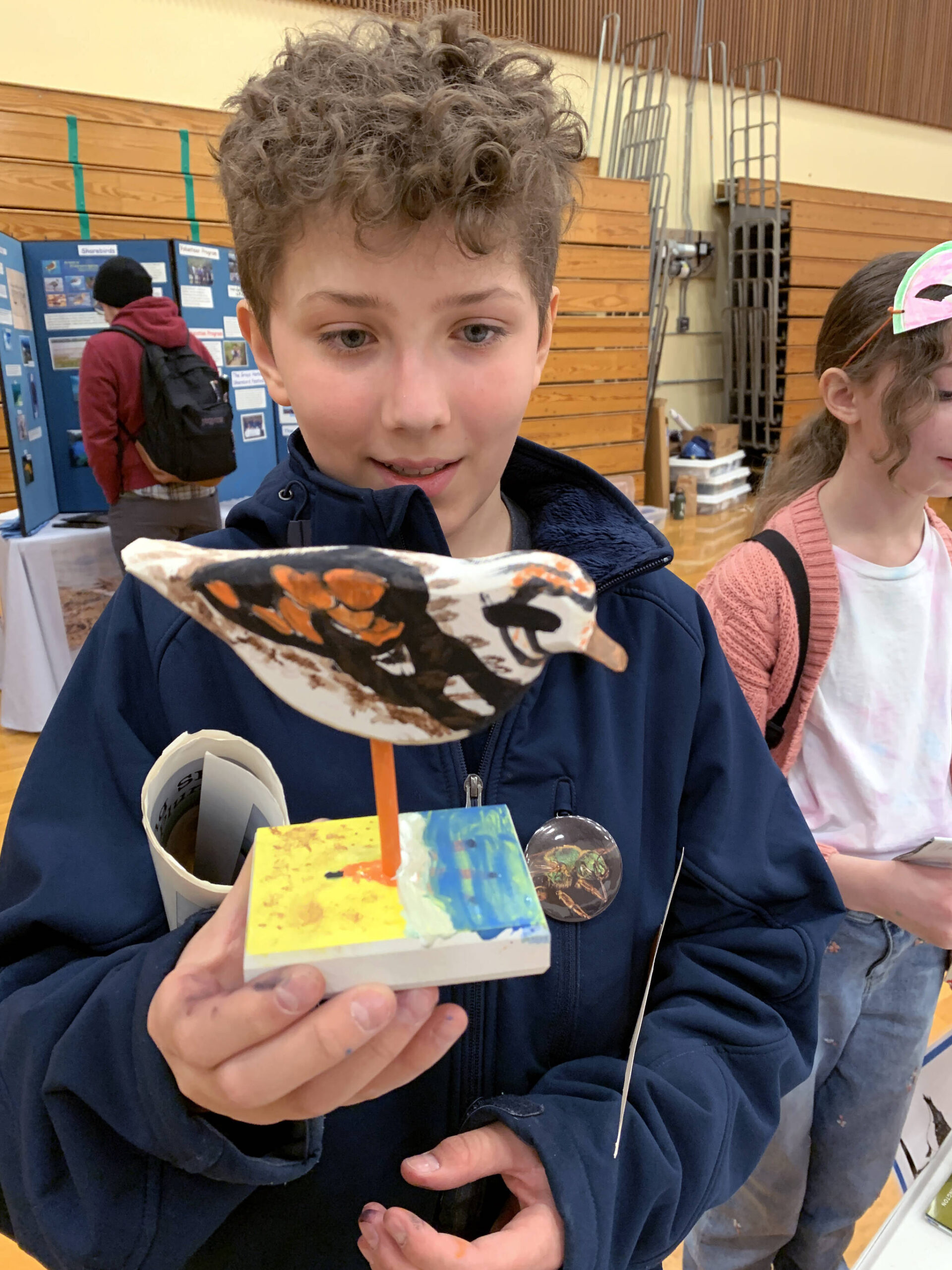Visitors came to Grays Harbor by the tens of thousands over the weekend seeking a smorgasbord and a safe place to rest.
Grays Harbor is an ideal stopover for birds making an epic journey north. In spring, dozens of species of shorebirds travel thousands of miles from their warmer winter homes in Mexico and South America to reach their breeding grounds in the Arctic.
The seasonal spectacle draws another creature, people, who gawk at the birds during the massive migration
The 28th annual Grays Harbor Shorebird Festival ran May 3-5, providing an opportunity for birders and the broader public to see the birds and learn more about them, including field trips, presentations, keynote speakers and other talks.
For birdwatchers, the main spectacle took place at the Grays Harbor National Wildlife Refuge, a federally owned preserve in Hoquiam consisting of 1,500 acres of intertidal mudflats, salt marsh and uplands tucked between runways of the Bowerman Airport and the highway leading out of town. Shorebirds use their bills to probe the mudflats for invertebrates like clams, worms and shrimp.
While the entire Chehalis River estuary ecosystem is important for shorebird migration, the refuge, which is sheltered from the larger bay is particularly important. According to the U.S. Fish and Wildlife Service, the refuge makes up only 2% of the intertidal habitat in the estuary but hosts up to half of the migrating shorebirds in spring.
As the tide fills Grays Harbor, covering the flats, feeding shorebirds are concentrated closer to land, making for closer viewing.
“We concentrate on getting people out on the Sandpiper Trail during that high tide period, three hours before high tide to three hours after high tide,” said Glynnis Nakai, who manages the refuge at Grays Harbor and the Billy Frank Jr. Nisqually National Wildlife Refuge near Olympia for the U.S. Fish and Wildlife Service.
The Sandpiper Trail, a two-mile boardwalk equipped with interpretive signs and spotting scopes, brings visitors into prime viewing territory for shorebirds. During morning high-tide periods during the three-day festival, U.S. Fish and Wildlife biologists and volunteers were positioned on the boardwalk with spotting scopes, helping the public spot and identify groups of birds by the colors of their plumage. They called out shorebird species as the birds descended into the flats — black-bellied plovers, red knots, dowitchers, godwits, whimbrels, dunlins, sandpipers and others.
The tiny birds, some of which are no larger than about six inches, appear as specks to the naked eye, but spotting scopes revealed a frenzy of fast-twitch feeding with birds spread across the mud.
The tedious task of counting each of these birds was left to Ryan Munes, a biologist with the Grays Harbor refuge, and another volunteer. Counting birds individually works for larger species, such as the gull-like Caspian Tern, but smaller species like sandpipers, which form clouds and flowing formations in flight, must be tallied in bunches.
Munes and company counted 15,784 shorebirds at the refuge on May 3. A few days earlier that number hovered around 27,000.
Human eyes aren’t the only way to track shorebirds as they enter the Harbor. That ability has been enhanced in recent years by the installation of a pair of Motus towers, which catch signals from tiny radio tags on the legs of shorebirds. Scientists tag birds and use the international network of 1,500 towers to map the migration routes and patterns of individuals, groups and species for a myriad of different studies.
The maps show how one Red Knot arrived just in time for the festival, leaving its winter home in the Gulf of California on April 30, stopping in the San Francisco Bay and passing a Motus tower on Breckenridge Bluff in Hoquiam on May 2. Nakai said this year’s migration carried a higher abundance than last year of Red Knots, noticeable by their colorful auburn plumage.
While the festival is positioned around peak travel periods, shorebird migration will continue for another few weeks, Munes said.
Nakai said the festival is a good chance to showcase the Sandpiper Trail and emphasize that the natural area is open all year round.
“We’re kind of tucked away, and yet it’s one of the premier locations to see birds,” Nakai said. “Some of it is just letting the communities know that this is in their backyard.”
Contact reporter Clayton Franke at 406-552-3917 or clayton.franke@thedailyworld.com.


